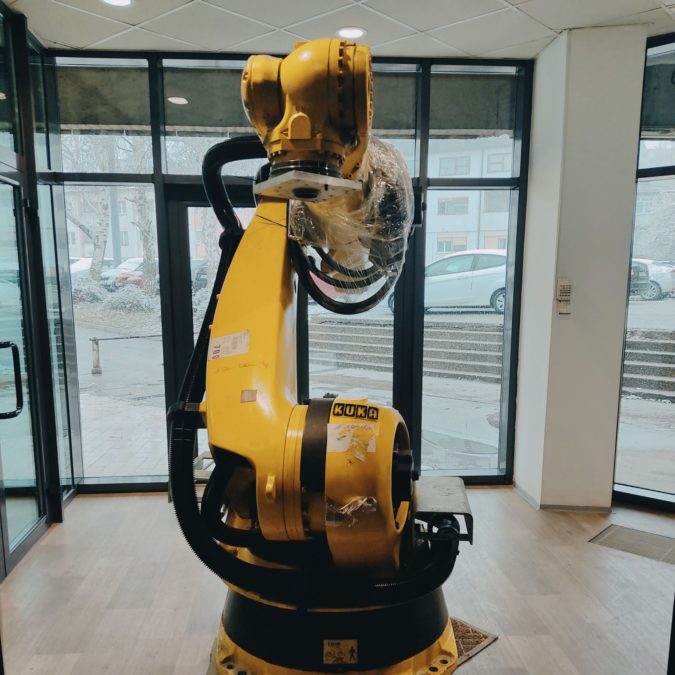The use of industrial robots is without a doubt unavoidable in production. Today, due to simple adaptation in repetitive and precise procedures, a large number of sectors have applied the use of industrial robots in their production lines; in food production processes, pharmaceutical industry, metallurgy, construction, plastic products, furniture, army, mining, etc.…
The average lifespan of mechanical parts on an industrial robot is between 10 and 20 years, depending on maintenance. The performance of the robot will always depend on the maintenance management system of a robot and the supporting equipment.
Our partners often come with requests to inspect and preventively maintain such a used robot in their plant. Once we establish the correctness of the robot, we train and reprogram the industrial robot to work in the industrial process, restoring its value.
Different manufacturers recommend a different time span between the two preventive maintenance. For example, FANUC recommends that the planned preventive maintenance of an industrial robot should be performed every 3,850 h or every 2 months, whichever comes first. Another example, KUKA recommends preventive maintenance of robots after 10,000 hours of operation for its robots.
Although scheduled maintenance can stop production for a short time, it is negligible compared to the production time you can lose if your robot stops working.
Here are some recommended tips for preventive and routine robot maintenance:
- Back up the controller memory
- Visual control of the robot in regular motion
- Brake checks
- Robot repeatability check
- Robot vibration and noise control
- Greasing of robot axes
- Visual inspection of teach pendant and controller cables
- Outputs, inputs and cooler functionality
- Replace RAM and APC batteries if needed
- Cleaning of vents and filters with compressed air
- Tightening the robot belts
- If necessary, replace the batteries in the controller and the robotic arm
Do not allow improper maintenance to stop the operation of your industrial robot. A robot that works brings profit and creates value, while a robot that does not work represents a cost to the owner. If it is time for your routine robot inspection, contact the German Robotics Center.
